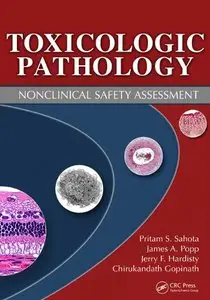Toxicologic Pathology: Nonclinical Safety Assessment By Pritam S. Sahota, James A. Popp, Jerry F. Hardisty and Chirukandath Gopinath
2013 | 987 Pages | ISBN: 1439872104 | PDF | 213 MB
2013 | 987 Pages | ISBN: 1439872104 | PDF | 213 MB
As drug development shifts over time to address unmet medical needs and more targeted therapies are developed, previously unseen pharmacological or off-target effects may occur in treatment. Designed to provide practical information for the bench toxicologic pathologist working in pharmaceutical drug research, Toxicologic Pathology: Nonclinical Safety Assessment presents a histopathologic description of lesions observed during drug development and discusses their implication in the drug development process. Divided into two sections, the book systematically assists pathologists in making a determination as to the origin and potential importance of a lesion and its relevance for assessing human risk. The first section includes eight "concept" chapters to orient pathologists in areas that are important for effective interaction with other pathologists as well as the many non-pathologists involved in drug development. The second section is made up of organ-based chapters, each including light microscopic and electron microscopic descriptions of pathological lesions, differential diagnoses, biological consequences, pathogenesis, mechanism of lesion formation, and the expected clinical pathology correlates. This volume presents critical information―both published and unpublished and gained through personal experience―to improve the quality of drug safety evaluation and to expedite and improve the efficiency of the process. This book is crafted to assist students, residents, and toxicologic pathologists in their early career phase by serving as a resource that can effectively be used as a ready reference next to the microscope. In addition, more experienced pathologists will find this volume to be invaluable during their assessments. The book is also a valuable reference for toxicologists to assist in understanding compound-related pathological findings and to provide background for working on a range of toxicological problems.



